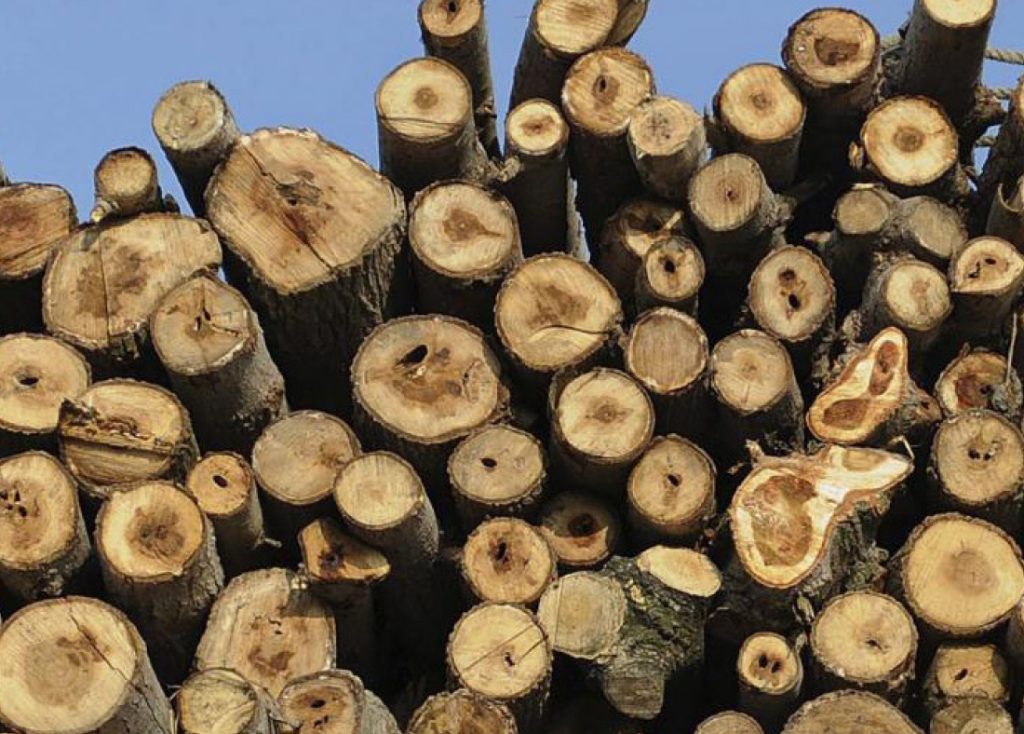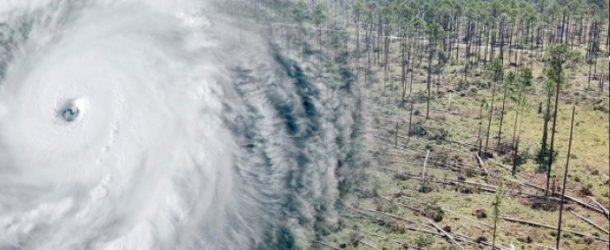Laura Dealt SWLA’s Timber Industry A Catastrophic Loss
By Brad Goins
When LSU AgCenter’s County Agent Jimmy Meaux says, “we’ve lost a lot of pine trees in the forestry industry,” he’s not exaggerating.
While Meaux, who is based in Lake Charles, can’t provide hard figures about trees damaged outside of the forestry industry — such as trees in private yards and landscaping — he can eyeball the damage and make observations as easily as the next person.
“I think 75 percent of trees in yards [in Calcasieu Parish] are at least damaged [as the result of Hurricanes Laura and Delta]. I don’t think you can drive anywhere without seeing damage.”
Observations of a similar sort are being made at Wilkinson Tree Farm in Iowa. A company representative stated that since Laura made landfall, the operation’s inventory has been reduced by more than half. There is likely a correlation between the dramatic reduction in inventory and the orders of property owners who wish to replace trees.
On a personal note, owner Jay Wilkinson lost 70 percent of the trees on his property. As far as his business goes, he doesn’t have any firm figure about how tree sales compare to pre-hurricane levels other than to say that the farm has “a high volume” of sales at present. After Hurricane Rita, he says, Wilkinson Tree “didn’t get a call [for a tree replacement] for two years. We got the first call two days after Laura.”
The Hard-Hit Timber Industry
While statistics about the losses of trees in private yards are hard to come by, the LSU AgCenter has put together a bumper crop of numbers about the losses in the timber market in Southwest Louisiana that are due to Hurricane Laura.

In Calcasieu Parish, the timber damage amounted to more than 35 million cubic feet of destroyed pine timber and 20 million cubic feet of hardwood timber.
To translate these tree losses into dollar amounts, the toll for Calcasieu’s pine timber was $39 million; a slightly lower figure — $37.6 million — was lost among hardwood timber. Total timber losses in Calcasieu Parish due to Laura were $76.6 million.
Prices for lost timber in some parishes are higher than those in Calcasieu due to the value of different types of wood; for this reason, the dollar losses of those parishes were higher. For instance, Rapides Parish lost $166 million worth of timber. Losses in Beauregard Parish were $143 million. And Vernon Parish’s lost timber was worth a stunning $360 million.
Total losses to the timber industry throughout Southwest Louisiana amounted to $1.1 billion. Losses of pine outpaced losses of hardwood at slightly more than a 2 to 1 ratio.
Factors Affecting Timber Prices
One factor that affects the dollar value of timber losses is the quality of wood that was destroyed. In Beauregard, the percentage of hardwood saw timber that was lost was higher than in Calcasieu, which lost a greater percentage of the far less expensive chip-n-saw and pulp wood.

Also, a large amount of damaged timber in a particular category can lead to a glut in the market. A case in point is hardwood used for pulp. The pulp hardwood market was already strapped when Laura hit. Damaged pulp wood in SWLA will have to be sold for low prices if it can be sold at all.
The exception to all this is hardwood saw timber. Saw timber tends to be more resistant than other forms of timber to decay and environmental degradation. It tends to draw a high price as it can be used as a sturdy building material.
The Louisiana Dept. of Agriculture and Forestry believes that timber growers in Southwest Louisiana will be able to sell, on average, 10 percent of their damaged wood.
The figures for timber losses were calculated on the basis of observations made by the Louisiana Dept. of Agriculture and Forestry after Hurricane Laura and data reported by Louisiana timbers growers. Areas of 900 acres each were ranked as either “moderately impacted,” “severely impacted” or “very severely impacted.” Prices used to value the wood were those that appeared in the most recent edition of the Dept. of Agriculture and Forestry’s Quarterly Report of Forest Products.
Many, like Meaux, feel that hardwood trees will be somewhat resilient in the years following Laura.
Meaux sees the live oaks as “recovering better than water oaks.” He thinks many live oaks “will come back slowly” even though they “had to get large areas removed” by tree cutters after Laura. “I think a lot will recover.”
















Comments are closed.